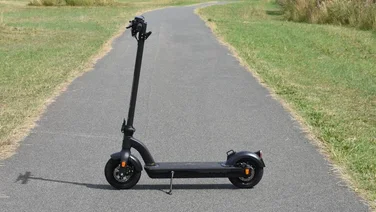To help us provide you with free impartial advice, we may earn a commission if you buy through links on our site. Learn more









For each of the last four years, Panasonic has launched two Travel Zoom (TZ) cameras: a flagship model packed with all its latest gadgetry and a lower-priced cut-down version. This year, Panasonic Lumix DMC-TZ30 gains a 20x zoom, 50fps video recording and a touchscreen, but the TZ25 inherits some impressive features of its own that were previously reserved for the flagship model.

One of these is 10fps burst shooting. The TZ25 has less buffer memory than the TZ30, so it’s only able to capture four frames at 10fps, but it was ready to go again after just three seconds. More significant is its ability to shoot at 5fps with continuous autofocus. It ran at 4.3fps in our tests, slowing to 1.9fps after five frames, but this is still a stellar achievement. It puts the TZ25 beyond all its rivals bar the TZ30 when it comes to capturing moving, distant subjects such as sports and wildlife.

It’s just as fast as the TZ30 in normal use, capturing a shot every 0.7 seconds. With most rivals bumbling along at around the two-second mark, this made a huge difference to day-to-day operation, letting us fire off a handful of shots without having to look in the continuous settings.
Another key upgrade is 1080p video recording. Panasonic backs this up with 30-minute clip lengths, outstanding image quality both indoors and out, plus a crisp, detailed soundtrack that’s virtually impervious to noises from the lens. Autofocus was responsive, and the optical stabilisation kept telephoto shots steady. The TZ30 goes one step further with its 50p capture, but until there are convenient ways to share video at this frame rate, the two cameras’ video modes are, to all intents and purposes, identical.

Their controls are virtually identical, too. There’s a mode dial for quick access to manual exposure settings, and scene presets such as 3D and panorama capture. There’s no wheel on the back, but the Q.Menu button lets you access key settings quickly. Sadly, it doesn’t have a touchscreen, which means that the autofocus point can’t be moved around the frame. Something that we didn’t notice on the TZ30 was Auto mode switching to HDR capture when it detected a strong backlight, capturing two frames and overlaying them to expose the foreground and background correctly. It’s a useful trick that worked extremely well but it slowed the camera so that it took six seconds between shots.
Both cameras’ lenses start at a wide-angle 24mm (equivalent) focal length, but the TZ25’s 16x zoom isn’t quite a match for the TZ30’s 20x zoom. Along with the TZ30’s higher resolution, it had the edge for capturing details in distant subjects.

Extremely sharp focus means the TZ25 holds it own against cameras with even bigger zoom ranges – click to enlarge
However, the TZ25’s lower resolution gave it an advantage for noise levels, which not only delivered smoother colours in low light, it also helped to resolve details in dense textures, such as foliage, in bright conditions. For us, this was more significant than the TZ30’s extra resolution and zoom range, and on balance we prefer the TZ25’s photos.

There’s quite a lot of noise reduction being used here, but image quality holds together in low light – click to enlarge
If they were the same price we’d probably be tempted by the TZ30’s GPS radio, touchscreen and bigger memory buffer for longer-lasting burst shooting. The TZ25 is £50 cheaper, though. It takes gorgeous photos and videos, it’s fast and it’s easy to use. It’s an obvious Best Buy.





